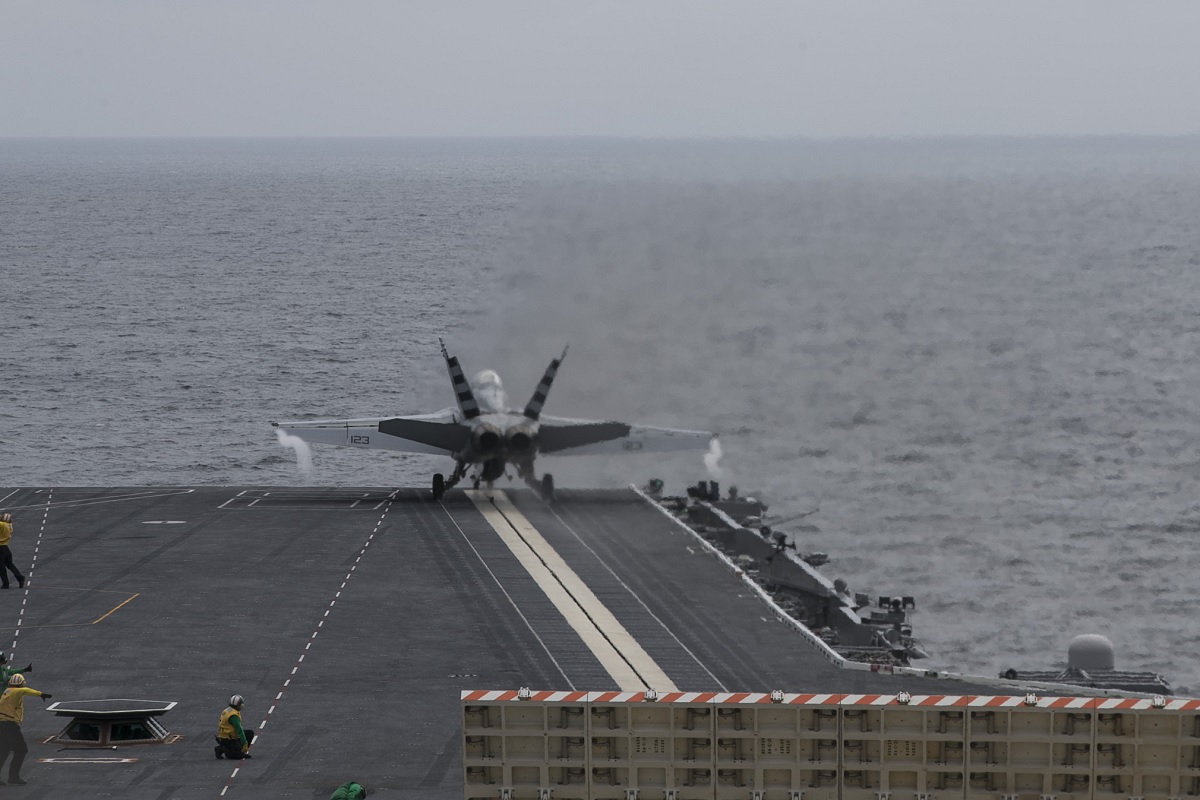VX-23 F/A-18F Super Hornet flown by Lt. Cmdr. Jamie Struck caught the number two arresting wire of Ford’s advanced arresting gear (AAG) system and was launched from catapult one using the electromagnetic launch system (EMALS)
On Jul. 28, 2017, less than one week after Pres. Donald J. Trump commissioned the U.S. Navy’s newest aircraft carrier, USS Gerald R. Ford (CVN 78) launched and recovered its first fixed-wing aircraft off the coast of Virginia.
As reported in a U.S. Navy press release, the F/A-18F Super Hornet Air Test and Evaluation Squadron (VX) 23 based at Patuxent River, Maryland was flown by Lt. Cmdr. Jamie Struck of Tallmadge.
Noteworthy the Super Hornet caught the number two arresting wire of Ford’s advanced arresting gear (AAG) system and was launched from catapult one using the electromagnetic launch system (EMALS).

“Today, USS Gerald R. Ford made history with the successful landing and launching of aircraft from VX-23 using the AAG and EMALS,” said Adm. Phil Davidson, commander, U.S. Fleet Forces. “Great work by the Ford team and all the engineers who have worked hard to get the ship ready for this milestone.”
“AAG and EMALS have been successfully tested ashore at Lakehurst, New Jersey, but this is the first shipboard recovery and launch of a fleet fixed-wing aircraft,” said Capt. Rick McCormack, Ford’s commanding officer.
“My team has worked closely with industry, Naval Air Systems Command (NAVAIR), and the flight test community to make this historic event in Naval aviation happen. I am very proud of my crew.”
The software-controlled AAG is a modular, integrated system that consists of energy absorbers, power conditioning equipment, and digital controls, with architecture that provides built-in tests and diagnostics, resulting in lower maintenance and manpower requirements. AAG is designed to provide higher reliability and safety margins, as well as to allow for the arrestment of a greater range of aircraft and reduce the fatigue impact load to the aircraft.

The mission and function of EMALS remain the same as the traditional steam catapult; however, it employs entirely different technologies. It delivers necessary higher-launch energy capacity, improvements in system maintenance, increased reliability and efficiency, and more accurate end-speed control and smooth acceleration. EMALS is designed to expand the operational capability of the Navy’s future carriers to include all current and future planned carrier aircraft – from lightweight unmanned aircraft to heavy strike fighters.
In the following videos, you can see Lt. Cmdr. Struck F/A-18F performing the first “fixed-wing aircraft launch” and first “trap” onboard USS Gerald R. Ford.
Photo by Erik Hildebrandt and Mass Communication Specialist 3rd Class Cathrine Campbell / U.S. Navy

